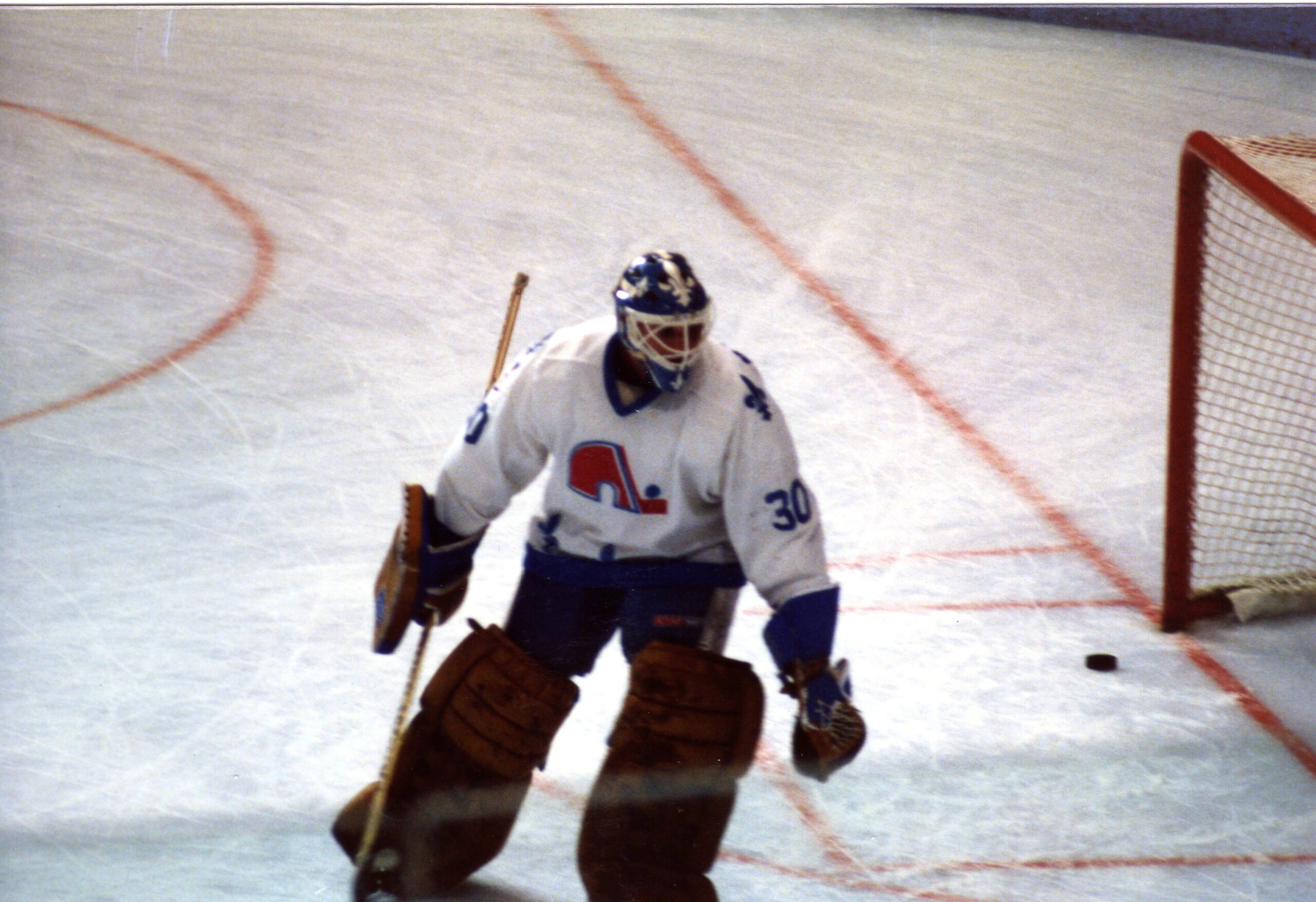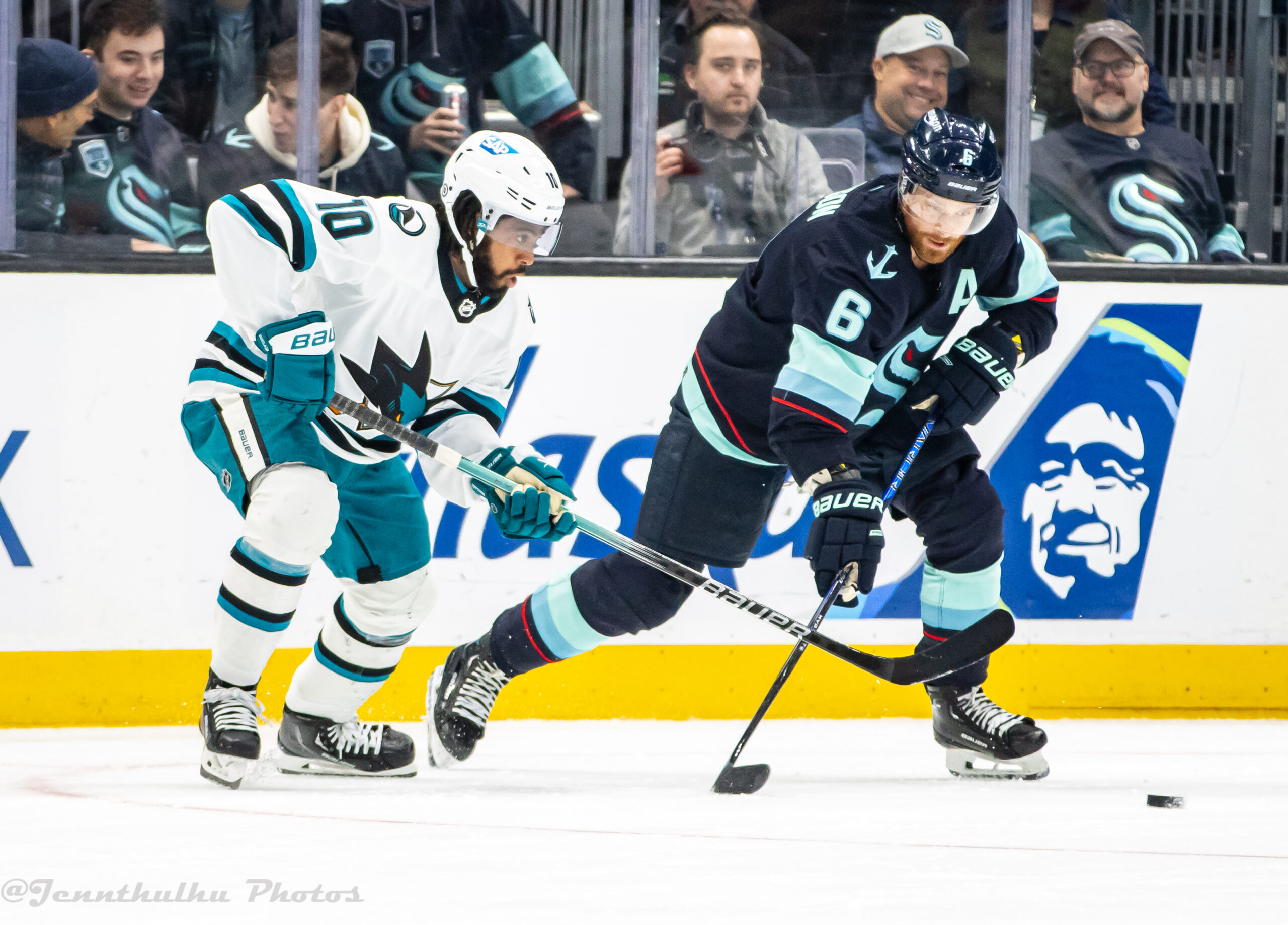Recent tragic news broke of the death of Adam Johnson playing in the English Ice Hockey Association (EIHA) following a skate cut to the neck. The hockey world, and the world at large, was shocked. This is a sport, played for fun and entertainment, and a horrific death occurred. Following the incident, many leagues started implementing neck guard requirements. For hockey, injury prevention is certainly a focus even though injuries are inevitable due to the nature of the sport. But death? That has to be prevented at all costs.
Incidents Cause Change
After Johnson’s unfortunate death, the EIHA quickly moved to implement a hockey neck guard requirement starting in 2024. Likewise, the WHL implemented a similar requirement while the OHL and QMJHL already had that mandate. Other leagues across Europe as well as Hockey Canada itself require the hockey neck guards. Meanwhile, USA Hockey and the NHL still only recommend the guards.
But what has changed? What I mean is it’s the shock of the injury that spurred the response versus an actual change to the game. Sure, it’s gotten faster, and the players are more physically improved over the years. But nothing has really changed otherwise to lead to more of these type accidents.
Historical Hockey Equipment Changes
If you look back at the history of hockey, the game has changed fairly drastically. Playing schemes and strategies, training regimens, nutrition, you name something and it has likely changed. But one of the most notable changes has been to equipment. This is both in performance and protection. In its early days, hockey was played with no helmets…including no goalie helmets. The game started with flat blades on the sticks. But then the curve came, and goalies’ faces started feeling the wrath. Jacques Plante famously pioneered the first permanent goalie mask and the trend continued.
Likewise, NHL players didn’t use helmets until Jerry Toppazzini donned the first one in the early 60s. However, it wasn’t until the end of the 70’s that the NHL decided to require helmets for new players (older players could continue without). Why? New medical research and an alarming number of head related deaths. It wasn’t until 1997 that it became mandatory across the board.
Similar results have led to other equipment innovations, trends and requirements. Following many serious eye injuries, the NHL required all players with less than 25 games of NHL experience to wear visors in 2013. The number of players not wearing visors is down to single digits now. A scholarly journal published in 2021 in the Canadian Journal of Ophthalmology found the results of the visor requirement to be very positive in relation to eye injuries. Another example of change came after Erik Karlsson was cut on his Achilles tendon. More players, including Karlsson, opted for cut resistant socks made of Kevlar following this injury.
The Economics
When you take a look at this from the economic side, there is a common theme amongst successful entrepreneurs. If there is a problem, we provide a solution. Just think about it. When COVID hit, companies like Zoom took off with their virtual meeting technology. It was used before but now it almost HAD to be used. Sometimes the business needs to convince people to use their products. Sometimes the market just begs for it.
This happened with equipment as well. Before 1979, helmet manufacturers had a limited market. But then the NHL started requiring them and boom, a whole new market explodes. The same is happening with hockey neck guards. A sports store owner in Fredericton stated that normally she would sell about 200 neck guards a year. Following Johnson’s incident, she sold 50 in a week. This is due to both higher voluntary demand and increased league requirements. Some NHL players such as Claude Giroux and TJ Oshie are already using the neck guards on their own accord. If the NHL were to require it, the market would explode. It’s also unlikely any straggling lower leagues would remain on the sidelines if the NHL made that jump.
Why the Resistance?
So, the big question comes, why haven’t more people used, and why haven’t more leagues required, the neck guards before now? I have never personally used one, but I cannot imagine they are really that inhibiting. You already are loaded with other equipment that you simply adjust to when playing. One answer seems to stem from the simple nature of hockey culture.
The “Tough Guy”
Hockey players are seen as “tough.” They will fight, hit at high speeds, and play through injury. Sometimes playing through injury in the NHL is not what it seems though, as players are numbed to the pain. This brings up tons of questions about long term health and conflicts of interest but that is a talk for another day.
This idea that hockey players are tough and don’t need protection has come almost at every moment of enhanced protection requirements. When helmets were required, many players resisted. Notable early players such as Andy Bathgate commented on their ability to play without head protection. But we are talking about your head here. Is being tough worth potentially permanent brain damage? The same could be said about neck guards. You are talking about a very vulnerable part of your body that, as seen, can lead to death.
The famous incident before Johnson occurred when goalie Clint Malarchuk took a skate to the throat, cutting his jugular vein. Fortunately, the team’s trainer saved Malarchuk’s life. However, Malarchuk suffered from PTSD, depression and anxiety. That is another side to this question, with depression and mental issues stemming from such a shocking injury. With players like Giroux stepping out to wear the guards, and repeated shocking events, it may help change those feelings when it comes to neck guards.
Updated Standards
From an organizational standpoint, certain ones such as USA Hockey have been slow to make it a requirement due to the lack of standard of the current hockey neck guards available. The currently available neck guard products on the market are not certified by the Hockey Equipment Certification Council (HECC), which certifies other pieces of equipment like helmets. The International Organization of Standardization (ISO) published a standard for neck laceration protective equipment in 2017 but it was never certified. They are reportedly working on an updated standard and this is what USA Hockey is waiting on. Is it better to require a subpar neck guard than nothing at all though? Differing medical opinions would probably disagree on this.
With that said, USA Hockey’s Board of Directors recommended that the Safety and Protective Equipment Committee begin the process of requiring neck guards. When the Committee meets in January this could be on the short list of changes.
Why Can’t the NHL Just Require Hockey Neck Guards?
So, if the NHL wanted to simply implement a requirement for neck guards, couldn’t they? Legally, no they can’t. Not unilaterally at least. Due to the very nature of collective bargaining and labor negotiations, equipment requirements have to be agreed upon by the league and the NHLPA. In fact, because this involves conditions of employment, it is what’s known as a mandatory subject of bargaining. This means the employer and employees (i.e. the NHL and NHLPA) HAVE to negotiate the subject.
What this means is that the owners have to be on board and so do the players. While the typical hockey attitude has been in opposition to items like neck guards, we may be seeing a change. It’s unfortunate that it takes an event such as a death to do this, but here we are. With the increased demand, I’d expect to see neck guard manufacturers taking a harder look at increasing their comfortability and protection. On the owners’ side, it may be an expense they don’t prefer to add, but it is protection for one of their most valuable assets – their players. Not to mention the PR behind utilizing them. This is certainly a subject the NHL and NHLPA will discuss in depth soon.
Concluding Thoughts
At the end of the day, the answer to the question of if neck guards should be required is a simple yes. But it’s a little more complicated than that. Especially in the NHL. Should it just remain up to the players to take the risk? Or does the league not leave it up to chance? If the NHL decides to step in it will need the NHLPA’s agreement, which may require a further movement away from the “tough guy” attitude in hockey. Again, its players’ throats we are talking about. Not to mention the mental side. Other leagues, especially dealing with minors, may have more unilateral ability to impose requirements.
But one other interesting thought involves liability. Could leagues actually become liable for injuries if they don’t require them? Much like the lawsuits surrounding the NHL and CHL with head injuries, if the league knows the risk and fails to protect the players, at what point is the line crossed? It seems a little too remote at this point but there is a lot changing here. In any event, it’s a sad occurrence that hopefully will lead to positive changes.
Post image attribution: Claude Brochu, CC BY-SA 3.0 https://creativecommons.org/licenses/by-sa/3.0, via Wikimedia Commons




